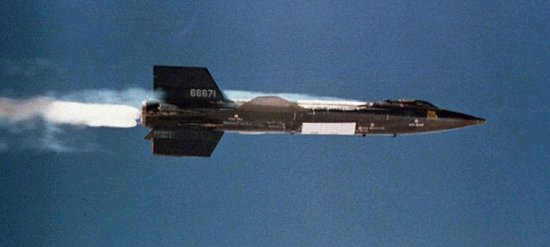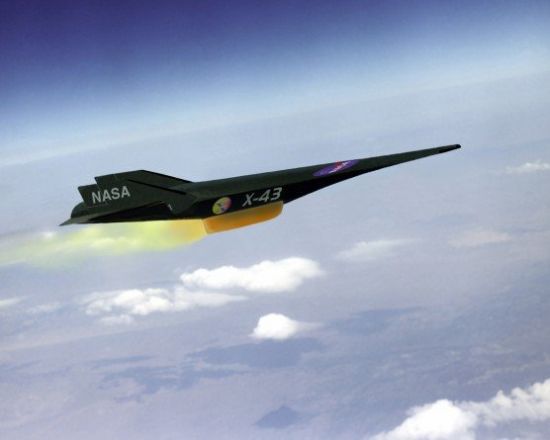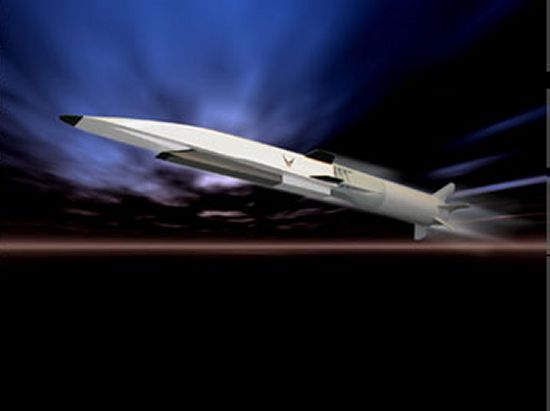|
||||||||||
|
|
||||||||||
|
||||||||||
|
|
||||||||||

In a previous question about jets and rockets, we explained why both kinds of engines require oxygen to function. The primary difference between them is that rockets carry their own supply of oxygen internally while jet engines pull in oxygen from the external atmosphere. While the X-15 was powered by onboard rocket engines carrying the oxygen needed for combustion, the scramjet is an airbreather, meaning that it gets its oxygen from the surrounding air. However, the scramjet is significantly different from other kinds of jet engines, like turbojets and ramjets, in one key way. In most jets, the air pulled into the engines is slowed below Mach 1 and is combusted at subsonic speeds. The air within the scramjet combustion chamber, however, remains supersonic. The challenge of making a scramjet work is properly mixing the high-speed air with fuel while combusting and expanding that mixture before it exits the tail of the vehicle. This process typically occurs in less than 1 millisecond (0.001 seconds). Furthermore, the scramjet must burn enough fuel to generate an enormous amount of energy needed to overcome the tremendous drag forces experienced when flying at hypersonic speeds.
In order to make a scramjet work, researchers must choose a fuel that can burn rapidly and generate a large amount of thrust. Hydrogen meets these criteria. One way to illustrate the differences between various fuels and their energy content is a measurement called the Lower Heating Value (LHV). The LHV describes the amount of energy released when a fuel is combusted and all of the remaining combustion products remain in gaseous form. The LHV for hydrogen is 119,600 kJ/kg. JP-8, another fuel commonly used in military aircraft, has a LHV of only 43,190 kJ/kg, less than half that of hydrogen. Simply put, hydrogen provides more "bang" per kilogram than JP-8, or any other hydrocarbon fuel for that matter.
There are also other advantages to using hydrogen as a fuel. First of all, hydrogen is extremely flammable; it only takes a small amount of energy to ignite it and make it burn. Hydrogen also has a wide flammability range, meaning that it can burn when it occupies anywhere from 4% to 74% of the air by volume. Since hydrogen is a gas, it mixes very easily with air allowing for very efficient combustion. Another advantage over hydrocarbon-based fuels like JP-8 or gasoline is that hydrogen does not produce any harmful pollutants like carbon monoxide (CO), carbon dioxide (CO2), or particulate matter during the combustion process. It is for this reason alone that many researchers have promoted hydrogen as a fuel in the public transportation industry.
Nevertheless, there are some disadvantages to using hydrogen as a fuel in aerospace vehicles. Hydrogen is not a dense fuel. At standard pressure and temperature, it has a density of only 0.09 kg/m³. Compare that to the density of gasoline at 750 kg/m³ or JP-8 at 800 kg/m³. While this low density is an advantage in terms of saving weight, hydrogen requires a large volume in order to store an adequate amount of chemical energy for practical use. Hydrogen gas is typically stored under pressure to increase its density, but even at 10,000 psi (68,950 kPa) it will contain only a quarter of the chemical energy stored in an equivalent volume of JP-8. The density of hydrogen can be further increased by cooling and pressurizing the substance to the point that it becomes a liquid, but even in this form it will need a tank approximately twice the size of that required by JP-8. In addition, the cost and safety issues involved in manufacturing and storing cryogenically-cooled fuel is another major drawback. Despite the clear advantages of hydrogen described earlier, more energy can often be stored in smaller volumes using denser fuels. As a result, vehicles burning denser hydrocarbon fuels can usually fly longer distances than those using hydrogen.
Even given these limitations, however, hydrogen has been a clear choice for many scramjet researchers due to its versatility and performance. One of the first hydrogen-fueled scramjets ever flown was the X-43A launched on 27 March 2004. The X-43A is part of NASA's Hyper-X program to develop new air-breathing propulsion systems for use in hypersonic flight. To date, this vehicle is the only official airframe-integrated scramjet to fly autonomously under its own power. A milestone in scramjet research, the X-43A achieved positive acceleration while climbing at Mach 7 for approximately 10 seconds. A Mach 10 version of the X-43A is currently slated to fly by the end of 2004.

Although there has been considerable research into developing scramjet engines using hydrogen, there is also a strong push to develop new scramjets that use more conventional fuels. In addition to the disadvantages of hydrogen described previously, hydrogen is still very expensive to produce when compared to conventional hydrocarbon fuels. A scramjet that combusts a liquid hydrocarbon fuel is due to be ground tested on 30 May 2004. This effort is part of the HyFly program funded by the Office of Naval Research (ONR) and the Defense Advanced Research Projects Agency (DARPA). The goal of this scramjet development effort is to eventually flight-test a missile demonstrator that could cruise at Mach 6 for 600 nautical miles (1,110 km).

Pratt & Whitney and Boeing Phantom Works have also teamed in a separate effort to develop another scramjet called the WaveRider (SED-WR) for the US Air Force. This engine uses JP-7 as a fuel and will be able to fly from Mach 4.5 to Mach 7. NASA is also investigating a hydrocarbon-fueled scramjet engine that could fly aboard a new version of the X-43 called the X-43C. Should it be funded, this research vehicle would demonstrate the ability to accelerate from Mach 5 to Mach 7 using conventional fuels.
The role of scramjet technology in the future of aerospace is still unclear. Although the world's militaries will
undoubtedly continue to develop these engines for various weapon applications, experts disagree as to whether or
not the scramjet will ever see commercial use. Adam Brown, vice president of market forecasts for Airbus, said,
"We have seen the flying boats go and I rather fear that when the Condorde stops...we are going to see the
supersonic go. And it's very, very difficult to see it coming back." Meanwhile, Mike Benzakein of GE Aircraft
Engines disagrees. "High-speed flight, whether it's at Mach 2 or Mach 4 or 5, will occur. It might start with the
supersonic business jet first. There's a market out there that says we can take people from Point A to Point B in
half the time that we're taking [them] today." But if scramjets do become an integral part of our transportation
network, will they be fueled by hydrogen? Only time will tell the tale. You can learn more about hypersonic
travel at the Aerospaceweb.org site about
waveriders, a special class of high-speed vehicles.
- answer by Matt Walker, 4 April 2004
Related Topics:
Read More Articles:


|
Aircraft | Design | Ask Us | Shop | Search |

|
|
| About Us | Contact Us | Copyright © 1997- | |||
|
|
|||